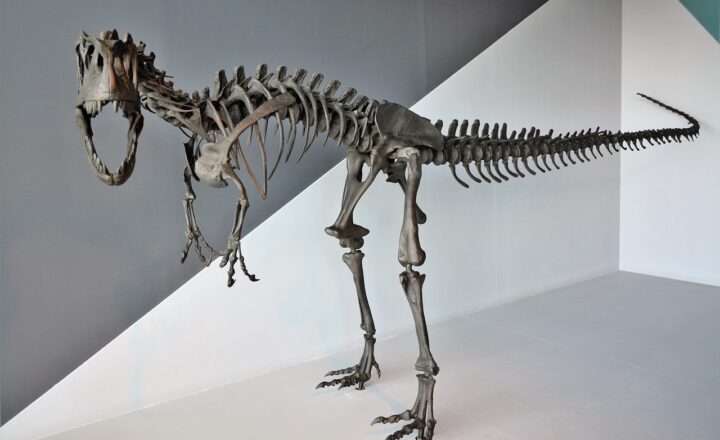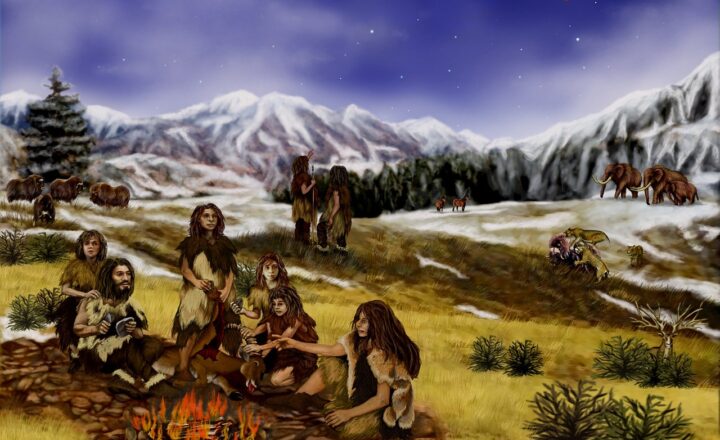The Theory of Evolution as Explained Through the Fossil Record
November 12, 2024

The theory of evolution, formulated by Charles Darwin in the 19th century, presents a comprehensive explanation of how species adapt and change over time. One of the strongest pieces of evidence supporting this theory comes from the fossil record. Fossils provide a direct line of insight into the history of life on Earth, revealing a wealth of information about the organisms that existed long before humans walked the planet.
1. Understanding Fossils and Their Formation
To comprehend the relationship between fossils and the theory of evolution, it’s essential to understand what fossils are and how they form. Fossils are the preserved remains, impressions, or traces of organisms that lived in the past, often found in sedimentary rock. The process of fossilization involves several steps:
- Death: The process begins when an organism dies in an environment conducive to fossilization, such as a riverbed or lake where fine sediments accumulate.
- Burial: Rapid burial by sediment is crucial. It protects the remains from decay and scavengers, increasing the likelihood of fossilization.
- Mineralization: Over time, the organic materials in bones and shells may be replaced with minerals from groundwater, forming a fossil.
- Erosion and Exposure: Geological processes may expose fossils at the surface, making them accessible for discovery and study by paleontologists.
Understanding this process is crucial as it sets the stage for examining how fossils contribute to our knowledge of evolutionary changes.
2. The Fossil Record: A Window into the Past
The fossil record serves as a historical account of life on Earth. It provides clues about the organisms that existed, their physical forms, and their relationships to one another. Some key points regarding the fossil record include:
- Temporal Representation: The fossil record showcases species that thrived at various intervals throughout Earth’s history, indicating how life forms have changed over millions of years.
- Evidence of Transitional Forms: Fossils often reveal transitional forms—species that exhibit characteristics of both ancestral and derived forms, supporting the concept of common descent. An example is the fossilized remains of Archaeopteryx, which displays traits of both dinosaurs and modern birds.
- Mass Extinction Events: The fossil record evidences several significant extinction events that drastically altered the course of evolution, such as the mass extinction that occurred 65 million years ago, leading to the demise of the dinosaurs and paving the way for the rise of mammals.
These points illustrate how the fossil record tracks evolutionary changes and highlights the dynamic nature of life on Earth.
3. Key Fossils Supporting the Theory of Evolution
Several significant fossil discoveries have played a pivotal role in supporting evolutionary theory:
- Hominid Fossils: Fossils such as those of Australopithecus and Homo habilis demonstrate the evolution of modern humans from earlier primate ancestors. The more we discover, the clearer the picture of human origins becomes.
- Tiktaalik: This 375-million-year-old fish-tetrapod transitional fossil provides insight into the evolution of vertebrates that ventured from water to land. Tiktaalik displays features of both fish and early amphibians, bridging a significant gap in evolutionary history.
- Cambrian Explosion Fossils: The fossils from the Cambrian period, around 541 million years ago, showcase a rapid diversification of life forms, marking a critical period in evolutionary history where many major groups of organisms first appeared.
Each of these fossils contributes to understanding how various life forms are interrelated and how they have changed over time.
4. Challenges in Interpreting the Fossil Record
While the fossil record is a powerful tool for understanding the theory of evolution, it comes with its challenges:
- Incomplete Record: Fossilization is a rare event, meaning that many organisms that lived in the past likely never became fossils. Consequently, the fossil record is often incomplete and can misrepresent historical biodiversity.
- Bias in Fossil Discovery: Fossils are more likely to be found in certain environments (e.g., coastal regions) or in more robust organisms, leading to potential bias in what information is available for study.
- Dating Limitations: While techniques such as radiometric dating can provide age estimates, the accuracy can be influenced by various geological factors, making it challenging to pinpoint exact timelines for evolutionary events.
Despite these challenges, the fossil record remains one of the best evidence bases for supporting the theory of evolution.
5. The Unifying Principle of Biology
Understanding the theory of evolution through the lens of the fossil record has broader implications for biology as a whole.
Evolution is a unifying theme across various biological disciplines, indicating the processes that contribute to the diversity of life, including:
- Natural Selection: Fossils often demonstrate how certain traits offer advantages in particular environments, leading to the survival of those with beneficial adaptations.
- Speciation: The fossil record supports theories of speciation, illustrating how new species arise from ancestral forms through evolutionary pressures and environmental changes.
- Conservation Biology: By understanding evolutionary history through fossils, conservation efforts can better target species and ecosystems needing protection, informed by past experiences of extinction and survival.
These examples highlight how the foundation of evolutionary theory is essential across various domains of biological study, advocating for a comprehensive understanding of life’s history.
Conclusion
The fossil record serves as a compelling testament to the theory of evolution, providing invaluable information about the history of life on Earth. Through fossils, we gain insights into the relationships between organisms, the transitions that indicate evolutionary change, and the resilience of life through environmental shifts. While challenges in the interpretation of the fossil record exist, the evidence overwhelmingly supports the notion that all life is interconnected through a shared evolutionary history.
Ultimately, studying evolution through fossils enriches our understanding of biology, informing conservation efforts and enhancing our appreciation for the complexity of life on Earth.








